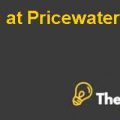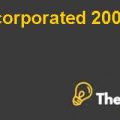LAUNCHING A NEW MOTOR OIL Case Study Solution
Characterize and assess the behaviour of consumers in their purchase of motor oil i.e. assess, among any other considerations, the nature of the purchase, the benefits and risks associated with the purchase of the product, the price sensitivity, where it is bought, etc.
There are two different segments of consumers that purchase motor oil for their vehicles. These are the Do it Yourself and Do it For Me segments. The nature of the purchase is different for both of these segments. DIY consumers have the necessary skills and knowledge about the lubricants and how to replace the oil. They usually live in the suburbs and the perform the replacement of the oil in their vehicles manually on their own. 70% of these customers are loyal to their brand and they stick to one brand because of their trust in the brand. As these customers are doing their own oil replacements, therefore, they tend to buy oil from the easy to reach or the major mass merchandisers such as convenience stores, special stores such as Autozone and Wal-Mart and through the online websites.
The second segment of the consumers, which is DIFM consumer, segments lives in the large cities. This segment includes people with higher income, higher education levels and they are older in age as compared to the DIY segment. Therefore, they prefer to change their oil from qualified technicians and since, they change their oil through different PCMO service providers, therefore, they use the motor oil which is advised or preferred by the service provider.
Most of the PCMO consumers view oil change, which costs them money and time. Along with this, most of the consumers were highly price sensitive and because of this, little growth was expected for the oil change providers and the PCMO manufacturers. Previously, in the 1980s the PCMO market was a DIY market in US however, as the options of low cost DIFM grew, there has been a shift from DIY to DIFM. This has occurred also because of the changing behaviour and the demographics of the consumers where most of the consumers had higher income and they considered oil change as a nuisance.
The DIY consumer segment had more knowledge about their vehicles and they had a much better understanding about different motor oils in the market. However, the DIFM consumers were not interested in maintenance of their vehicles and for this purpose; they relied on the professionals for routine maintenance. These differences led to benefits and risks for the DIY and the DIFM consumers. For instance, the benefit for the DIY consumers is that they usually prefer a single brand and know the differences between the different brands available in the market.
However, the DIFM customers are not able to recall the last motor oil brand which they purchased. These customers do not worry about the details of the oil and the brand. Another benefit for the DIY customers is that they save a lot of money by doing the oil change by themselves however; the benefit for DIFM customers is that they save a lot of time by using the service of the professional service providers. Moreover, there are also risks with the purchase of the products. For instance, the risks for DIY customers are that they might not be using the optimal oil for their vehicle and as they are price sensitive therefore, they usually buy conventional motor oil. On the other hand, the DIFM customers are not aware about the different motor oil brands and they have to rely on the advice of the service providers. They might be paying more than the actual cost of oil change for their vehicles.
Finally, if we talk about the distribution of the oil then there are different distributors through which DIFM consumers can change their oil or DIY consumers can purchase oil. These include the fast lubes, oil change plus, repair shops, car dealers, mass merchandisers and warehouse clubs. Consumers can purchase motor oil or make use of the services of all of these service providers, However, the fast lube service provider is the one which has resulted in a shift from DIY to DIFM. The price, which was charged by the fast lubes, was also higher as compared to the other service providers. Exhibit 1 shows that the largest channel share is captured by fast lubes, which is 32% in 2012. These all the main sources which the motor oil is bought from. The DIY consumers purchase oil from these segments and the DIFM consumers make use of their services.
Question 2
Assess Avellin’s position in the passenger car motor oil (PCMO) market, including consumer perceptions and distribution strategy. Why has it lost market share over time?
In terms of the brand share, the position, which is taken by Avellin in the PCMO market, is number three. The two close competitors of the company are Baud and Motoline. The market share of Avellin in 2012 is 11%. Secondly, if we look in exhibit 3 of the case, then we can see that Avellin has excelled in the DIFM segment of the market, which is highly price sensitive. The company owns around 17% of the total price focused consumers and this share is higher as compared to its close competitors.
However, the position of the company within the DIFM quality focused segment is lowest among all the players in the market. This means that the perception of the consumers is more towards the price of the motor oil as compared to its quality. The competitive prices of Avellin have resulted in its larger share among the DIYM price focused customers. It can be concluded that the customers buy oil from Avellin because of its low price as compared to the other players in the market.
Based on the excellence achieved by the company in the DIFM segment, it can be said that the distribution strategy of the company is strong. The motor oil produced by Avellin was distributed to three different customer segments. First of all, Avellin was the leading distributor of the motor oil as well as Avellin was the leading brand among all of the independent DIFM customers, which include repair shops, oil change plus stores and fast lubes. The Aventage program of the company boosted the sales of the company through its independent DIFM customers. These customers generated 68% sales for the company. The second customer for Avellin was the national retails, which sold the product to DIY customers. This segment provided 9% of the PCMO sales to Avellin.
LAUNCHING A NEW MOTOR OIL Harvard Case Solution & Analysis
Finally, the most important segment of the company was the Avellin Auto through which the company had created AvellinAuto stores, which sold the Avellin products exclusively. The company had opened up 436 stores as of 2014 and this segment generated 7% of the total PCMO sales for Avellin. The remainder of the sales of the company came from other sources, which include convenience stores, online websites, car dealers and DIFM chains. This shows that the distribution strategy was strong for the company. However, being the top third motor oil company in the PCMO market, the market share had been lost by the company over time. There could be a number of reasons for the loss of the market share. These are listed briefly below:...................
This is just a sample partial case solution. Please place the order on the website to order your own originally done case solution.













